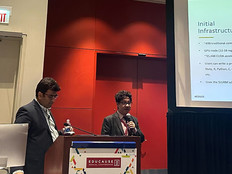What's the Difference Between Public, Private and Hybrid Clouds?
Cloud is a catch-all term that refers to a variety of increasingly popular ways to implement software and technology services. The cloud metaphor has its roots in the image that engineers have historically used to depict data networks. That metaphor has been adapted to describe solutions that are accessed via a network rather than being tied to specific physical servers.
Generally speaking, organizations can make use of three types of cloud implementations: public, private and hybrid. Here's a brief explanation of each.
Public Cloud
Public-cloud solutions are managed by service providers who deliver them to customers via a secure Internet connection. Many public-cloud services are multitenant, meaning the provider runs the solution in a shared environment, partitioning each customer’s data to ensure security. Others are single tenant, which means that customers have their own dedicated instance of the solution. Some experts don’t consider single-tenant services to be part of the cloud at all and instead refer to them as simply “hosted.”
Read more: Loyola University Taps Public Cloud to Power Virtual Desktop
Private Cloud
Enterprises can build private clouds within their own data centers by running applications on virtual servers that may reside on any number of available physical machines. This allows them to quickly add or reduce the physical capacity allocated to any given application based on demand and performance requirements. Some experts consider an environment to be a true private cloud only if this dynamic allocation of physical capacity is done automatically.
Read more: Preparing for the Journey to the Private Cloud
Hybrid Cloud
With hybrid clouds, organizations mix and match public- and private-cloud resources based on technical and business requirements. For example, an organization may run an application primarily in its private cloud, but tap into public-cloud resources during periods of peak demand. Or it may run an application primarily in a public- cloud environment while keeping some data relating to that application in its private cloud for compliance reasons.
Read more: What Are Hybrid Clouds and What is Their Role in Higher Education?
Learn more about leveraging the cloud for collaboration in our free white paper.






